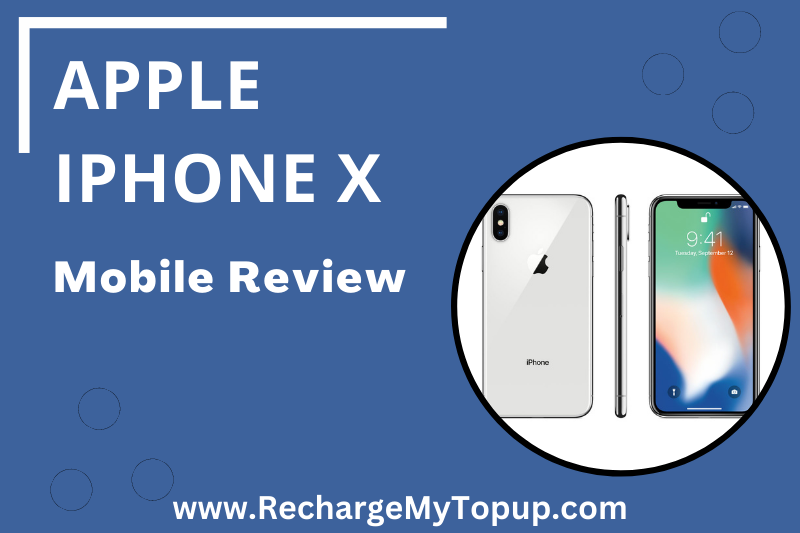iPhone X was a smartphone designed and developed by Apple Inc. It was released on November 3, 2017, and it featured a 5.8-inch Super Retina display, a glass and stainless steel design, and a TrueDepth camera system that enabled facial recognition. It was powered by Apple's A11 Bionic chip and ran on the iOS operating system. The iPhone X also introduced a new type of biometric authentication called Face ID, which used facial recognition technology to unlock the device. The iPhone X was succeeded by the iPhone XS, which was released in September 2018.
Display: The iPhone X featured a 5.8-inch Super Retina display, which was a OLED (organic light-emitting diode) panel with a resolution of 2436 x 1125 pixels. The display had a pixel density of 458 pixels per inch (PPI) and supported HDR (high dynamic range) content.
Design: The iPhone X had a glass front and back, with a stainless steel frame. It was available in two colors: Space Gray and Silver.
Cameras: The iPhone X had a dual-camera system on the back, consisting of a 12-megapixel wide-angle lens and a 12-megapixel telephoto lens. The camera system supported optical zoom at 2x and digital zoom up to 10x. The front-facing TrueDepth camera system included a 7-megapixel camera and enabled facial recognition for unlocking the device and animating emojis (called Animoji).
Processor: The iPhone X was powered by Apple's A11 Bionic chip, which was a 64-bit ARM-based system-on-chip (SoC) with a six-core CPU and a three-core GPU. The A11 Bionic chip was built using a 10-nanometer manufacturing process and was significantly faster than the A10 chip that powered the previous generation iPhone 7.
Software: The iPhone X shipped with iOS 11, which was the latest version of Apple's mobile operating system at the time. iOS 11 introduced a redesigned control center, a new App Store, and support for augmented reality (AR) applications.
Face ID: The iPhone X introduced Face ID, which was a new type of biometric authentication that used facial recognition technology to unlock the device. Face ID used a 3D depth-sensing camera system to map the user's face and create a facial map, which was then used to unlock the device when the user looked at it. Face ID replaced the Touch ID fingerprint sensor that was used in previous iPhone models.
Face ID: Face ID was designed to be more secure than the fingerprint-based Touch ID system that it replaced. It used advanced technology to map the user's face and create a detailed 3D facial map, which was then used to unlock the device. Face ID could also be used to make purchases through Apple Pay and to unlock other apps that required authentication.
Animoji: The iPhone X's TrueDepth camera system enabled a feature called Animoji, which allowed users to create animated emojis that mirrored their facial expressions. The feature was popular with users and was later adopted by other smartphone manufacturers.
Wireless charging: The iPhone X was the first iPhone to support wireless charging. It was compatible with the Qi wireless charging standard and could be charged by placing it on a wireless charging pad.
No home button: The iPhone X did not have a physical home button, which had been a staple of iPhone design since the first model was released in 2007. Instead, it used a new gesture-based system to navigate the user interface. To go to the home screen, users had to swipe up from the bottom of the screen.
No headphone jack: Like the iPhone 7 and iPhone 8, the iPhone X did not have a 3.5mm headphone jack. Users had to use the Lightning port or a wireless connection to listen to music or make phone calls.
Here is a summary of the key features and specifications of the iPhone X:
| Feature | Specification |
|---|---|
| Display | 5.8-inch Super Retina OLED display with a resolution of 2436 x 1125 pixels (458 PPI) and support for HDR content |
| Design | Glass front and back with a stainless steel frame; available in Space Gray and Silver |
| Rear cameras | Dual-camera system with a 12-megapixel wide-angle lens and a 12-megapixel telephoto lens; support for optical zoom at 2x and digital zoom up to 10x |
| Front-facing TrueDepth camera system | 7-megapixel camera with facial recognition for unlocking the device and animating emojis (Animoji) |
| Processor | A11 Bionic chip with a six-core CPU and a three-core GPU; built using a 10-nanometer manufacturing process |
| Software | iOS 11 with a redesigned control center, a new App Store, and support for augmented reality (AR) applications |
| Biometric authentication | Face ID facial recognition technology for unlocking the device and making purchases through Apple Pay |
| Wireless charging | Compatible with the Qi wireless charging standard |
| Navigation | Gesture-based system with no physical home button |
| Audio | No 3.5mm headphone jack; uses the Lightning port or a wireless connection for audio |





















